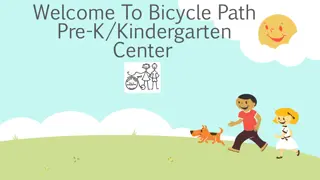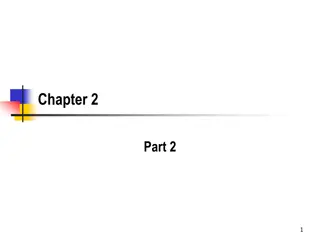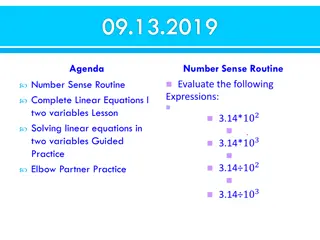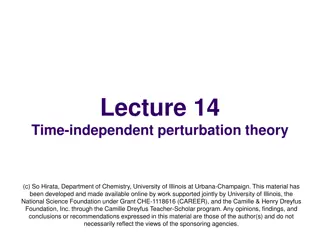
Unlocking the Potential of Recess in Educational Settings
Discover the significance of recess in schools today with insights on its current status, impact on academic performance, physical activity, and social skill development. Learn why recess should be supported, as well as the challenges and opportunities it presents.
Download Presentation

Please find below an Image/Link to download the presentation.
The content on the website is provided AS IS for your information and personal use only. It may not be sold, licensed, or shared on other websites without obtaining consent from the author. If you encounter any issues during the download, it is possible that the publisher has removed the file from their server.
You are allowed to download the files provided on this website for personal or commercial use, subject to the condition that they are used lawfully. All files are the property of their respective owners.
The content on the website is provided AS IS for your information and personal use only. It may not be sold, licensed, or shared on other websites without obtaining consent from the author.
E N D
Presentation Transcript
Is Recess the Most Underutilized Opportunity in Schools Today? David S. Fleming, PhD Clemson University
Overview What is recess (and what is it not)? Current status of recess including policies Recess elsewhere Organizational positions on recess Recess and academic impact Recess and physical activity/health Recess and social skill development Recess Should it be unstructured or structured? Recess for purposeful leisure time development What can you do to support recess?
What is Recess Regularly scheduled periods within the elementary school day for unstructured physical activity and play (CDC) Break time from standard academics when children engage in Chase games Ball games Jumping/verbal games General play Choose to do what they want to do and with whom Recess time in America ranges primarily from 20 to 60 minutes per day when allocated
What Recess is Not (or should not be) A replacement for Physical Education A waste of unproductive, valuable school day time that can be better spent on academic subjects A reward that can be taken away for punitive or behavioral reasons
Current Status of Recess Recess frequency and time allotted have been decreasing since the 1980 s Decreases have been more pronounced with the enactment of the No Child Left Behind Act 5.3% of school districts report increases in recess time; 32.3% of school districts report decreases in recess time Average of cuts have been 50 minutes per week Recess decreases are also more pronounced in lower SES schools schools with higher minority populations urban schools
Current Status of Policies Regarding Recess School District Level 60% of districts have no policy regarding daily recess 22% of districts require daily recess But less than half require at least 20 minutes Less than 7% of districts require a set amount of physical activity per day State Level 5 states require daily recess But only 1 requires at least 20 minutes 8 states recommend daily recess But only 2 recommend at least 20 minutes 10 states require a set amount of physical activity per day 4 states recommend a specific amount of physical activity per day
Recess in Other Countries Most European Schools spend between 30 and 105 minutes of recess per day Finland 67% of school day is academic content, 33% is unstructured outdoor play Australia, New Zealand, and Canada incorporate at least one hour of recess or free period per week Japan 25% of the school day is spent in non-academic activities China Many schools permit 1 to 2 hours per day in social activities including a 10 minute break each class period
Organizational Support for Recess Children should have 60 minutes of moderate to vigorous physical activity per day. Centers for Disease Control and Prevention; American Academy of Pediatrics All elementary school children should be provided at least one daily period of recess of at least 20 minutes in duration. SHAPE America Recess is an essential component of education and should be part of the curriculum for preschool through elementary school. National Association of Early Childhood Specialists in State Departments of Education Children need both Physical Education and Recess. SHAPE America; National Association of Elementary School Principals; National Association of State Boards of Education Recess should not be taken away as punishment. American Academy of Pediatrics; SHAPE America Principals should promote the development and maintenance of appropriately supervised free play for children during the school day. National Association of Elementary School Principals
Recess and Academic Impact Immediately after a recess, students are more attentive and better able to perform cognitively Children are less fidgety and more on-task after recess (largest impact noted on children with ADHD) Children raise their hands in class more after recess Children perform better on literacy tasks after recess Students perform better when learning via distributed versus mass instruction Concentrated instruction followed by interruptions of unstructured breaks (not another cognitive task)
Recess and Physical Activity/Health Affords the opportunity to engage in physical activity for the joy of movement Helps contribute to the 60 minutes of moderate to vigorous physical activity recommendations Opportunity for physical activity has been noted to be higher during recess (42%) than physical education (32%) or after school programs (26%) Children were less physically active after school on days of no recess or physical activity no compensation Recess periods offered before the lunch break have been shown to positively impact food consumption at lunch and less waste behavior at lunchtime and afternoon classroom time
Recess and Social Skill Development Recess allows children to engage in peer interactions in which they role play essential social skills including negotiation, cooperation, sharing, problem solving, perseverance, self-control, leadership, coping with and managing stress Research has found very little negative behavior during recess. Incidents primarily related to transitions Students desire to negotiate in order to continue participation Recess is often the only time of the school day when students have authority over their choices
Should Recess be Unstructured or Structured? Unstructured Children choose what and how they use the time provided at recess Purpose More traditional notion that children own this time and need the empowerment to choose their activities Structured Games and physical activities are taught and led by a trained adult Purpose Children need help in developing games and often require suggestions and encouragement to participate Benefits include enhanced game play, social skill coaching, higher levels of participation, and improved behavior Requires appropriately trained personnel BUT, structured recess should always permit student voice and choice in participation
Recess for Purposeful Leisure Time Development Smartphone use has exploded among youth 93% use the phone to prevent boredom 47% use the phone to avoid interacting with others around them Youth are losing the skill in purposeful leisure time development Recess can teach youth how to engage in voluntary, yet productive, leisure activities
What Can You Do to Support Recess? Researchers Conduct studies on the impacts of recess not only to support other areas, but as a necessary component of the curriculum for youth development. Teachers Continue to read about the importance of recess and communicate it to your local administrators. Also, refrain from using recess as a classroom management technique or for make-up work. Administrators Strive to develop policies that support student development through recess allotment both in time and frequency. Parents Communicate with local leaders on the importance of recess and the needs to support it through policy. Students Continue to play and grow from the recess periods provided and remind teachers and parents that short breaks are needed for you to be able to perform up to your potential just like everyone else.
Is Recess the Most Underutilized Opportunity in Schools Today? David S. Fleming, PhD Clemson University






















